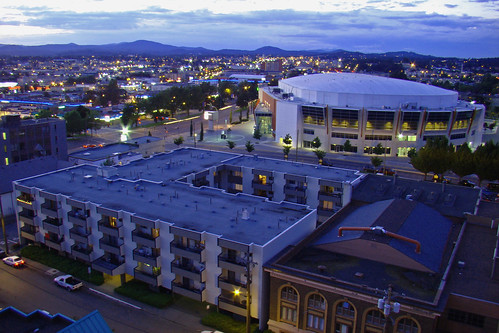Downtown density is just over 1200 per sq km and Lowe wants more public spaces.
What's wrong with this picture?
Planners can veer too close to artifice & artificiality. Jane Jacobs would perhaps have argued that we have to learn from nature: watch how nature develops, and model development on how nature does it. It's efficient, it's dense, it's "webby" (connected).
For me, the height of artsy artifice is Corbusier's "Radiant Village" (skyscapers set into parks). It's the sort of thing I might like to visit, the way I might enjoy visiting Disneyland. But live there? Not on your life!
For a 21st century version of what that might look like, check out Zaha Hadid's
New York Olympic Village (via YouTube):
Like drops of thick liquid the buildings set their New York based animation for Zaha Hadid's office depicting the proposed high rise Olympic Village overlooking the UN buildings.
It's a very contrived vision. People are noticeably absent of course. If people were present, they'd have to conform to the architecture, not the other way around.
It's the built stuff that
needs all that open space and all that open parkland surrounding it --
not the people.
Demanding endless open space around new development, even when it's not needed, sends a message
that the new stuff counts more than the people who are there. And so, paradoxically, "the people" resent the new development more and more, even though the planners put in all that open space "for" the people. But the people don't feel at home there.



















